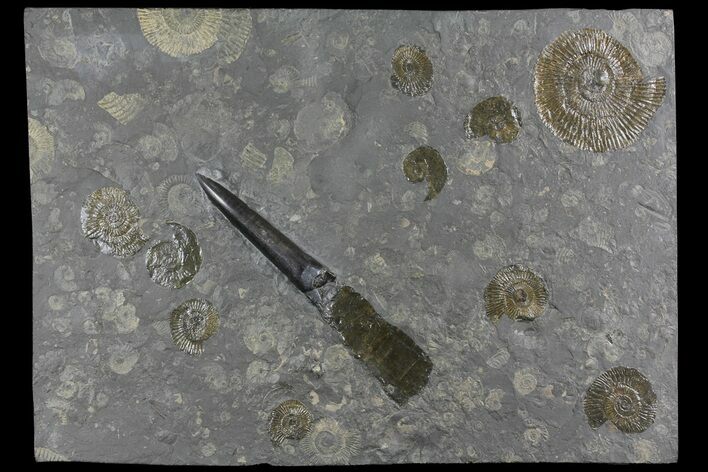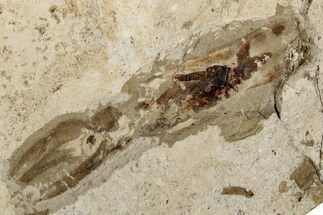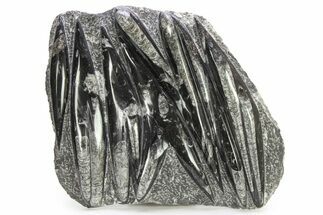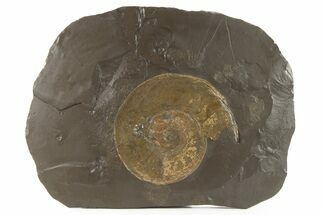This Specimen has been sold.
14" Fossil Belemnite and Ammonite Plate - Germany
This is a 14" wide shale plate that contains a fossil belemnite (Acrocoelites sp.?) rostrum and several ammonites (mostly Dactylioceras sp.) from the Posidonia Shale of Holzmaden, Germany. The rostrum of this belemnite has been polished and is still partially inflated. The pro-ostracum of the belemnite preserved nicely and has been coated in a sealant to bring out the detail. The pro-ostracum was an additional support feature for the soft body portions of belemnites and is rarely found preserved. The rostrum of this belemnite measures 3.5" long.
Comes with an acrylic/metal (gibson) display stand.
Comes with an acrylic/metal (gibson) display stand.
Belemnites are probably the most well known extinct cephalopod after the ammonites. They lived during the Jurassic and Cretaceous periods and are fairly common fossils found throughout the world. They had a hard, internal, cone-shaped structure that is often preserved as a fossil, though it is not technically a shell. They had ten arms but, unlike modern squid, these arms had small hooks instead of suckers.
Ammonites were predatory cephalopod mollusks that resembled squids with spiral shells. They are more closely related to living octopuses, though their shells resemble that of nautilus species. True ammonites appeared in the fossil record about 240 million years ago during the Triassic Period. The last lineages disappeared 65 million years ago at the end of the Cretaceous.
SPECIES
Acrocoelites sp? & Dactylioceras sp.
LOCATION
Holzmaden, Germany
FORMATION
Posidonia Shale
SIZE
6.8" Belemnite, 14 x 9.9" Rock
CATEGORY
SUB CATEGORY
ITEM
#167846
We guarantee the authenticity of all of our
specimens. Read more about our
Authenticity Guarantee.
specimens. Read more about our
Authenticity Guarantee.
 Reviews
Reviews















